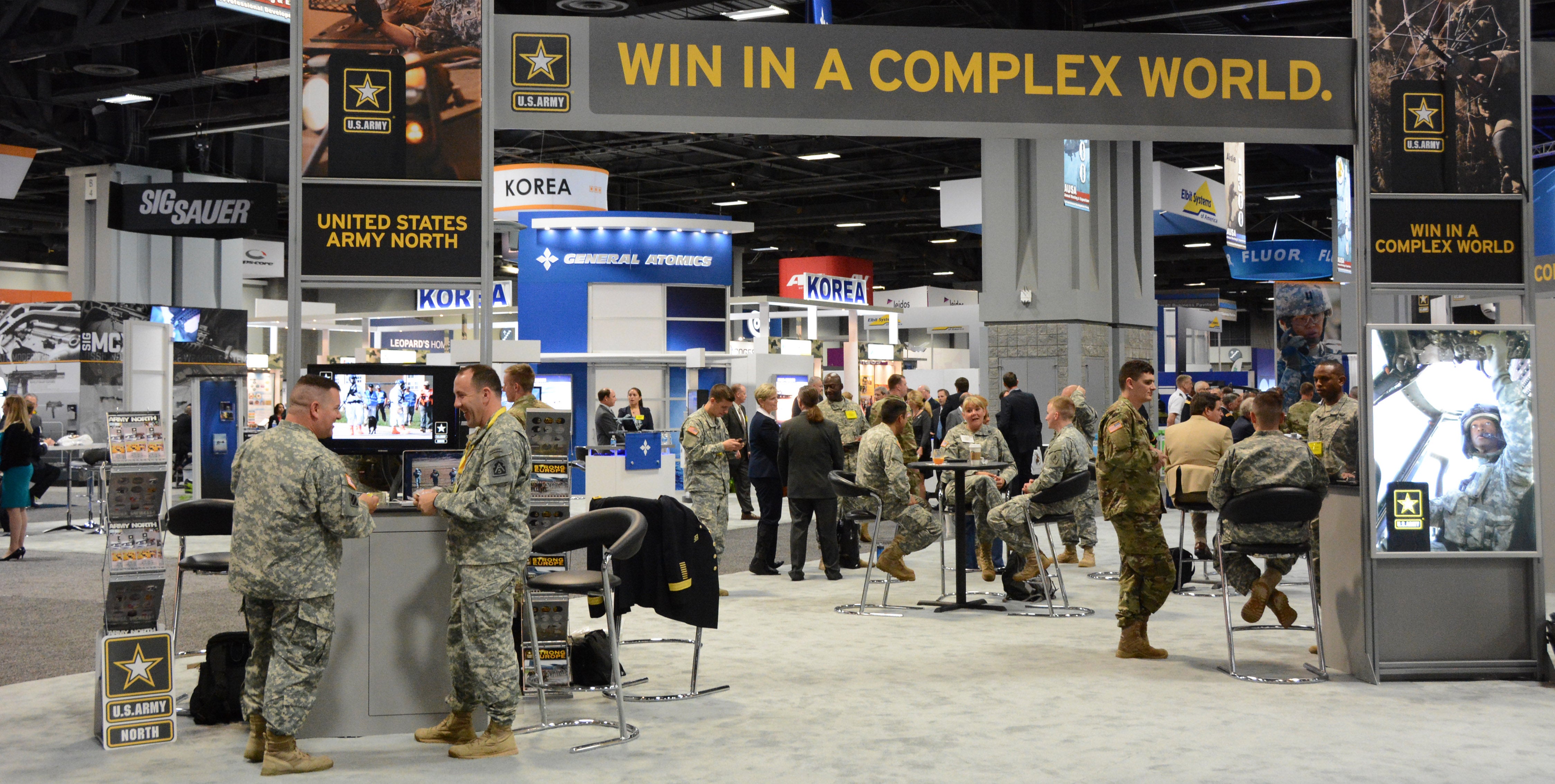Warfighting Assessment Talk at ‘Warriors Corner’
Warfighting Assessment Talk at ‘Warriors Corner’

A discussion about why the Army Warfighting Assessment is such a critical part of Force 2025 planning is one of about 20 events set for Warriors Corner, the Army booth on the exhibit floor at the Association of the U.S. Army’s 2016 Annual Meeting and Exposition that will highlight key Army themes.
The Warfighting Assessment briefing will be given by Maj. Gen. Terrence J. McKenrick, Brigade Modernization Command commanding general at the Training and Doctrine Command’s Army Capabilities Integration Center, and soon to become deputy commanding general of U.S. Army Central and the Third U.S. Army in Kuwait. McKenrick is one of the many top Army officials participating in the annual meeting, which begins Oct. 3 at the Walter E. Washington Convention Center in Washington, D.C.
The schedule for Warriors Corner presentations is here: http://ausameetings.org/2016annualmeeting/wp-content/uploads/sites/29/2016/09/WARRIORS-CORNER-SCHEDULE-web.pdf
McKenrick says the Army “no longer holds a technological advantage over our potential enemies like we enjoyed during Operation Enduring Freedom and Operation Iraqi Freedom,” partly because potential adversaries have access to advanced technology and partly because terrorist attacks and the increase of asymmetrical warfare are making the operational environment more complex.
There have been significant advances in lethality and survivability for soldiers, he said, such as improved optics, night vision, body armor and first-aid kits. “But as near-peer adversaries strive for regional dominance and increase the likelihood of armed conflict, the U.S. Army must complement these advances to the soldier with similar advances in unit performance and in our ability to leverage our joint and multinational partners,” McKenrick said.
The Army chief of staff’s annual Army Warfighting Assessment is “a critical component of the Army’s modernization strategy,” McKenrick said. It assesses emerging solutions to challenges facing warfighters, and gives industry partners a chance to “demonstrate their new technology and have the opportunity to receive soldier feedback.”
“Because of the large scale of the exercise, the Army can assess a variety of concepts and capabilities,” McKenrick said, noting assessments can provide information on the division or corps level, or even focus on a specific squad. For example, an October 2015 exercise evaluated 78 concepts and capabilities ranging from a microunmanned aerial system to an expeditionary base camp, a mobile hot spot, a wireless command post, and a microgrid to power a command post. A key part of the assessment is soldier feedback, McKenrick said. “That feedback leads to rapid improvements in technology, and enables senior Army leaders to make informed acquisition decisions,” he said. An example is a decision to move the PD-150, a microunmanned aerial system, for immediate fielding after the performance of the soldier-borne sensor in the Network Integration Evaluation 16.1 in October 2015.

